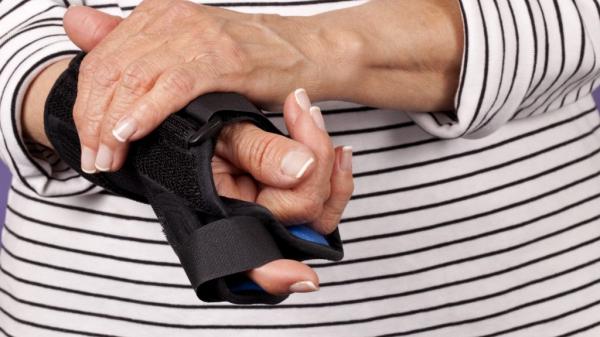
Medicare Benefits Scheme
Medicare is Australia’s universal health care system. It is operated by the Australian Government and is funded through the tax system. Citizens and most permanent Australian residents are eligible for Medicare.
If you have a chronic health issue, you’ll likely be familiar with the Medicare Benefits Scheme. However, you might not be aware of all the payments and benefits available to you.
The Medicare system provides free or heavily subsidised benefits across the following key areas.
➤ Hospital services
➤ Health professional services
➤ Pharmaceutical services
Hospital services
All those with a Medicare Card can be treated for free as a public patient in a public hospital. You cannot choose your own doctor and, depending on your health needs, you may need to be on a waiting list before you are admitted. Emergency cases are treated urgently, whereas those requiring non-urgent or elective procedures (such as joint replacements) may be on a waiting list for many months.
Health professional services
Medicare offers benefits for health professional services provided outside a hospital. This includes General Practitioner (GP) or rheumatologist consultation fees, diagnostic tests and more. In some cases, the cost of the service is fully covered by Medicare (bulk-billed). At other times, you may pay the difference between the full cost of the service and the maximum rebate payable by Medicare. This is usually referred to as your “gap” or “out-of-pocket” expense. It is a good idea to check your Medicare benefit entitlements with your provider when you make your appointment.
If you have a chronic health issue, your medical costs could be high. However, visiting a doctor or having tests may cost you less once you reach the relevant Medicare Safety Net threshold. At that point, you should receive a higher Medicare rebate for all eligible services for the rest of the calendar year.
If you are an individual with no dependents you don’t need to register for this safety net. Medicare will do that for you automatically. Couples and families can register to combine their costs and reach the safety net sooner. You can register online or by calling the Medicare general enquiries line on 132 011.
Chronic Disease Management Plans
There are two types of plans that can be prepared by a GP for chronic disease management. If you have a chronic medical condition, your GP may suggest a GP Management Plan (GPMP). There is no age limit or list of eligible conditions. These plans are determined by you and your GP to identify your health care needs and decide on a suitable course of action.
If you need treatment from more than one allied health professional, your doctor may also put a Team Care Arrangement (TCA) in place for you. This lets your doctor work with, and refer you to, at least two other health professionals who will provide treatment or services to you.
Medicare rebate assistance is available for this plan for up to a maximum of five appointments per patient per calendar year.
GP Mental Health Treatment Plan
If you are experiencing mental health issues such as anxiety or depression, talk to your GP as they can provide an impartial ear and, if appropriate, prescribe medication and recommend a Mental Health Treatment Plan for you.
This may involve referring you to a psychologist, psychiatrist, counsellor or another allied mental health professional. In most cases, Medicare benefits are available for up to 20 appointments per patient per calendar year. To start with, your doctor or psychiatrist will refer you for up to six sessions. If you need more, they can refer you for further sessions.
Telehealth services (consultations that take place either via telephone or via suitable video apps) have become widely available across the country as a result of the coronavirus pandemic. The Australian Government currently subsidises many medical and allied health telehealth appointments through the Medicare Benefits Scheme.
Health providers currently authorised to supply some or all of these services include (but may not be limited to):
➤ General practitioners.
➤ Medical specialists (such as rheumatologists, endocrinologists, obstetricians and cardiologists).
➤ Consultant physicians.
➤ Nurse practitioners.
➤ Consultant psychiatrists.
➤ Psychologists and clinical psychologists.
➤ Dentists.
➤ Selected allied health professionals (such as dieticians, physiotherapists, occupational therapists and social workers).
The Australian Government has committed to ensuring telehealth services and infrastructure will continue to play a key role in healthcare provision from now on, however, the funding and policies to support this will continue to be updated.
Most Australian children covered by Medicare can receive free general dental services through the Australian Government’s Child Dental Benefits Schedule. Children under 18 are usually eligible if their family is covered by certain family tax benefits.
Those with eligible concession or health care cards can apply for free or low-cost public dental health care. These cards include:
➤ Health Care Cards or Pension Concession Cards issued by Centrelink.
➤ Commonwealth Seniors Health Cards.
➤ Pensioner Concession Cards issued by the Department of Veterans’ Affairs.
The access criteria varies between the states and waiting lists can stretch to one to two years.
If you have dental damage and are also on immunosuppressants (for example, for autoimmune conditions) you may qualify for emergency care.
Pharmaceutical services
Pharmaceutical Benefits Scheme
The Pharmaceutical Benefits Schedule lists all of the medications available on prescription to patients at a government-subsidised price. These medications have been intensely reviewed by the Therapeutic Goods Association before being approved for use by patients.
The Schedule is part of the wider Pharmaceutical Benefits Scheme (PBS) managed by the Department of Health and administered by the Department of Human Services. The Scheme is available to all Australian residents who hold a current Medicare card.
The actual cost of PBS-listed medications can be substantial. For example, biologic medications for conditions such as rheumatoid arthritis or psoriasis can cost over $1,000 per month. In contrast, you only have to pay a small co-payment of less than $50 (or less than $10 if you have an appropriate concession card) for PBS-listed medications. The co-payment amounts are updated each year.
If you have chronic health issues, your co-payments can add up quickly. For many, this can mean taking medications less often even if it adversely affects their health. These costs can also have a major and negative impact on the household budget.
The PBS Safety Net reduces the cost of prescription medicines for individuals and families once the PBS Safety Net threshold has been reached. The PBS Safety Net threshold is updated on 1 January each year.
There are different thresholds for general patients and concession card holders. The threshold limits are based on your co-payment totals in each calendar year.
It is important to keep a record of your PBS medicines on a Prescription Record Form, available from your pharmacist. Use this form to record your PBS medicines so you know when you have reached the PBS Safety Net threshold. You can combine the amounts for all eligible family members to help you reach the safety net sooner.
If the same pharmacist provides all your PBS medicines, ask them to keep a record for you. If you use different pharmacies, you’ll need to track your medicine expenditure yourself.
Once you reach the threshold, you will need to apply for a PBS Safety Net Card through your pharmacist. You can show this whenever you purchase prescription medication at any pharmacy. General patients will then pay less than $10 per script while concession card holders will receive their prescription medications for free for the rest of the calendar year.
If you spend more than the threshold amount in a calendar year (for example, if you use various pharmacies without showing a PBS Safety Net Card), you can apply for a refund for the difference. Refund forms can be submitted through your pharmacist or completed online on the PBS Safety Net website.
(Note: You can get detailed information on prescription medicines and other treatments in the Medicine Finder section of the NPS MedicineWise website.)
Electronic prescriptions (ePrescriptions or eScripts) enable the prescribing, dispensing and claiming of medicines, without the need for a paper prescription.
Previously, the legal document for a prescription was the piece of paper that you take from your doctor to your pharmacy. With ePrescriptions, the legal document is the prescription data that gets uploaded to a secure and encrypted data exchange service (MediSecure).
If you choose to receive an ePrescription you can control which pharmacy can access it in one of two ways. You can opt to receive a token via SMS, email or paper printout for each item prescribed. The token provides a link to a unique code used by the dispensing pharmacy to access the legal document for dispensing.
Alternatively, you can elect for the new prescription to be added to your Active Script List (MySL). You can give your pharmacies, doctors and third-party intermediaries access to your list for an ongoing or specific period of time. Once granted access to this list, a pharmacy may dispense the items you need. Similarly, doctors and third-party intermediaries, with your consent, can view your active list of scripts.
The new ePrescription services support digital health services (such as telehealth services), electronic medication charts in hospitals and residential care facilities and provide an opportunity to protect community members and healthcare providers from exposure to infectious diseases (for example, COVID-19).
Regardless of which method you choose you will always be in control of who can access your ePrescriptions. Paper prescriptions will continue to be available as an alternative option.
National Immunisation Program
The National Immunisation Program (NIP) aims to increase national immunisation coverage to reduce the number of cases of diseases that are preventable by vaccination in Australia. The NIP provides free vaccines for babies, young children, teenagers and older Australians. Eligibility for free vaccines under the NIP is linked to eligibility for Medicare benefits.
The program also targets people of all ages who are at greater risk of serious harm from certain diseases, including:
➤ Pneumococcal disease.
➤ Meningococcal disease.
➤ Influenza (flu).
➤ Haemophilus influenzae type b disease.
Not all medical risk conditions are covered for free. For information on medical conditions recommended and/or funded, refer to the ATAGI clinical advice on vaccination recommendations for people with risk conditions from 1 July 2020.
Influenza vaccines
Influenza is a serious and highly contagious disease affecting the airways. The influenza vaccine is free to people six months and over who are classified as medically at risk (however, your healthcare provider may charge for the service). This may include those with chronic health conditions or reduced immunity due to disease or treatment.
If you fit into this category, it is recommended that you have a flu shot at the start of each flu season. In Australia, this is normally around April. In some cases, you may need a booster shot near the end of the season. It is best to plan all your vaccinations with your treating doctor.
COVID-19 vaccines
All Australians aged five years and over can now book an appointment for a COVID-19 vaccine. COVID-19 vaccinations are free for everyone in Australia. Getting vaccinated is the best way to keep you, your family, friends, and the community safe. COVID-19 will be with us for many years. Getting vaccinated has many benefits including:
➤ Protecting yourself against severe illness and death from COVID-19.
➤ Preventing complications such as long COVID.
➤ Protecting people who can’t be vaccinated due to medical conditions.
➤ Slowing the spread of the virus.
➤ Keeping hospitalisation rates at a level our health system can cope with.
Some illnesses, conditions or treatments can increase your risk of severe illness from COVID-19. For example, these may include autoimmune conditions, some types of cancers or chronic organ diseases. Other factors may include (but are not limited to):
➤ Your age (especially if you are over 70 years old).
➤ Being an Aboriginal or Torres Strait Islander.
➤ Being pregnant.
➤ Having a severe disability.
People who are severely immunocompromised may be eligible for a third primary dose of a COVID-19 vaccine. The third dose is intended to maximise the level of immune response to as close as possible to the general population.
The Australian Rheumatology Association regularly updates its Patient Information on the COVID-19 vaccination in autoimmune inflammatory rheumatic diseases (AIRD) in line with ATAGI recommendations. This information includes advice on eligibility for third primary COVID-19 vaccinations and boosters, the timing of medications around vaccination doses and much more.
Centrelink Payments and Benefits
The following payments and benefits are available through Centrelink. Each has specific requirements that affect your eligibility. These include (but are not limited to) your:
➤ Medical conditions and supporting evidence.
➤ Age.
➤ Income and assets.
➤ Australian residency status.
See the Centrelink Payment and Services Finder for more information.
Applications can be submitted online, by post or through a Centrelink service centre.
If you have a physical, intellectual or psychiatric condition and you meet the medical and non-medical access rules, you may be eligible for the Disability Support Pension (DSP).
As with many Centrelink payments for people with chronic illness, you will need medical evidence from your treating health professionals. It is important to take the time to gather enough solid evidence to help support your claim.
Examples of evidence you could provide include:
➤ Physical examination reports.
➤ Medical imaging reports.
➤ Medical history records.
➤ Psychological reports.
➤ Compensation or rehabilitation reports.
It is a good idea to contact Centrelink beforehand if you need help with the information you need to supply.
Applicants may need to undergo a Job Capacity Assessment to determine their medical needs and employment capacity.
You are allowed to have some casual or part-time work, but your pension amount may be affected.
The Mobility Allowance is a Centrelink payment that can help you with travel costs if you have an illness, disability or injury.
To be eligible for the Mobility Allowance, you must meet all of the following requirements. You:
➤ Are 16 years or over.
➤ Meet the appropriate Australian residency requirements.
➤ Have a disability that prevents you from using public transport without extra help. (There does not need to be public transport in your area for you to qualify.)
➤ Have a medical report from your doctor stating you can’t use public transport without help.
➤ Need to travel to and from your home as part of your work, self-employment, training or job-seeking for at least 32 hours every four weeks.
You may also be eligible to receive the Mobility Allowance if you participate in regular volunteer work.
Note that even if you don’t use public transport often, you may still be eligible for this allowance. However, your medical report needs to prove that, if you did have to use public transport regularly, you would find it difficult without help.
The Mobility Allowance is not income tested and you can receive it whether or not you receive other Centrelink benefits. For example, you could be working full-time and still receive this allowance providing you meet the requirements.
If you receive the Mobility Allowance but not the Disability Support Pension, you will also receive a Health Care Card.
Those currently receiving the Mobility Allowance who transition to the National Disability Insurance Scheme (NDIS) will no longer receive the Mobility Allowance or a Health Care Card, but they may be eligible for financial support for transport and a wide range of other NDIS supports.
Concession and Health Care Cards
Many Centrelink pensions, allowances and benefits come with a Pensioner Concession Card, Health Care Card or a similar type of card.
Most of these cards give you access to cheaper prescription medicines under the Pharmaceutical Benefits Scheme (PBS) and concessions on expenses such as public transport, household energy and internet bills and a range of health services.
Other Centrelink pensions and benefits
Centrelink provides a range of other pensions, allowances and benefits including Newstart, Youth Allowance, Carer payments and the Youth Disability Supplement.
They can also connect you to a wide selection of resources to help if you’re ill, injured or have a disability.
You can view more information about Centrelink pensions and benefits in Services Australia publication A guide to Australian Government payments. This publication is updated annually.
National Disability Insurance Scheme
The National Disability Insurance Scheme (NDIS) is a government scheme that provides extensive support for Australians with a disability, their families and carers. It is operated by the National Disability Insurance Agency (NDIA).
The NDIS is designed to help people get the help they need so their skills and independence improve over time. It provides funding for, and assistance with, accessing a range of community and employment services. The NDIS is not a welfare scheme and it operates independently of both Centrelink and Medicare.
Services and funds are accessed through a vast network of Early Childhood Early Intervention (ECEI) partners and Local Area Coordination partners. The services are carried out by approved NDIS government and private providers, such as physiotherapists and transport service providers.
The NDIS is not income tested so it won’t affect Centrelink income support payments such as the Disability Support Pension. However, it will eventually replace many other local, state and national disability benefit schemes and services.
Read more about the NDIS, who can access it and how it works in our NDIS resource
My Health Record
The My Health Record platform is operated by the Australian Digital Health Agency. It is administered jointly by the Department of Health and the Department of Human Services. MHR is an online resource where you can securely store your health information and share it with others.
The My Health Record (MHR) platform has existed for some years as an “opt-in” option. All Australians will have a My Health Record created for them (unless they opted out of the system before 31 January 2019). You can access and manage your own record online.
You can permanently delete your record if you choose to. If you have previously opted out before 31 January 2019 or cancelled your My Health Record, you can register for a record at any time.
How is My Health Record used?
Your record can be used to store information such as your medications, allergies or conditions, emergency contacts or pathology results. At your medical appointments, your doctor can see all your information at a glance, including information added by other providers. This is especially useful for those with chronic health issues or in emergency situations.
Who can access my personal health records?
You decide who can input information, who can see your records (including doctors, hospitals and other health service providers), and what information you want to include. You can have a record and simply leave it there for your approved providers to use as required. Or, you can decide to opt out of certain selections, restrict who can access your records and set up unique passwords.
Healthcare providers must also register to use the My Health Record platform. Only the healthcare provider organisations involved in your care and who are registered as MHR System Operators are legally allowed to access your record.
Not all healthcare providers are registered to use the platform. If you want to ensure your provider uploads clinical documents to your record, ask if they are a registered operator before your appointment. If they are not registered, you may want to change providers.
State Government Concessions and Benefits
In Australia, the full range of government concessions and benefits for those with chronic health issues varies between each state and territory. These can include, but are not limited to, concession rates or subsidies on utilities, private rentals and taxi services.
Medical Cooling Concessions
Those with a chronic illness that affects their ability to regulate body temperature, may be eligible for a summer electricity bill discount. In Victoria, this is known as the Medical Cooling Concession. The name of the concession and the eligibility requirements differ from state to state.
In all states, you must also have a relevant government concession card, such as a Health Care Card.
Diagnosed medical conditions that may be recognised by your state include fibromyalgia, lymphoedema and multiple sclerosis. You must provide a report from your treating doctor with your application.
Contact your energy supplier or state department of health via the links below for more information.
Assistance with accessing rural health services
The National Rural Health Alliance Ltd has collated a list of the Patient Assisted Travel Schemes designed to provide equitable access to essential health services for people in rural and remote Australia. The schemes are managed by the states and territories and provide travel and accommodation subsidies to and from medical services based on your eligibility.
Other state government concessions
Each state or territory government may also offer their own payments and benefits for those holding current Centrelink pension or concession cards. You can learn more about these through your respective Australian state or territory government website.
➤ Australian Capital Territory: Assistance
➤ New South Wales: Concessions, Rebates and Assistance
➤ Northern Territory: Community Support and Care
➤ Queensland: Cost of Living Support
➤ South Australia: Disability Concessions and Entitlements
➤ Tasmania: Discounts and Concessions
➤ Victoria: Concessions and Benefits
➤ Western Australia: ConcessionsWA
Other Resources
➤ Australian Disability Parking Scheme: Find out how Disability Parking services vary across Australia.
➤ JobAccess: This is the national hub for workplace and employment information for people with disability, employers and service providers.
Contact the relevant health or human services department in your state about other schemes that may benefit you.
You can access most of the above benefits and services through the Australian Government’s myGov portal.
Last reviewed August 2022.










